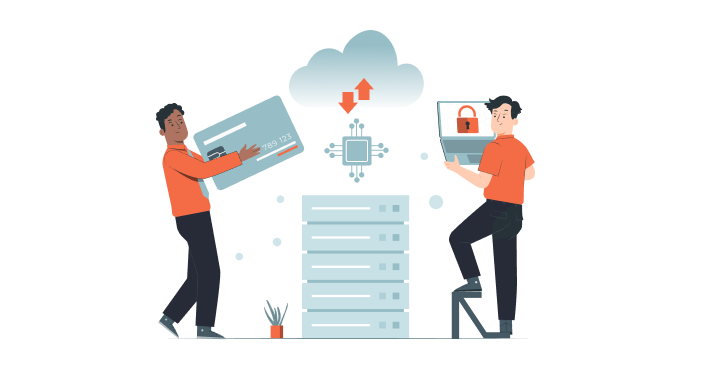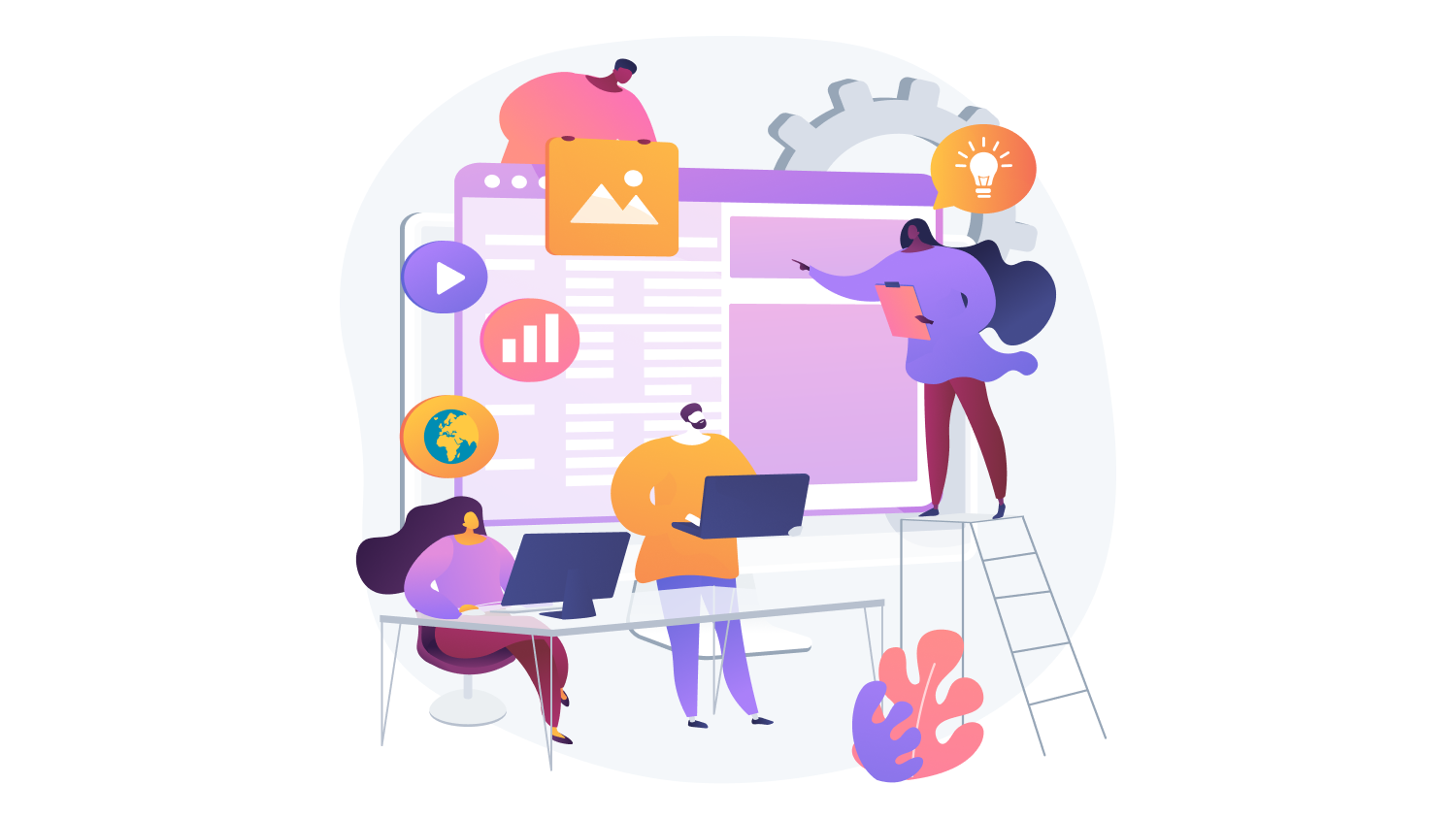Today, businesses strive to stay ahead of the competition by leveraging the latest technological advancements. One such groundbreaking advancement in recent years is the emergence of no-code and low-code platforms. They have revolutionized how applications are developed and allowed non-technical users to create applications using their ideas.
Even though no-code platforms open application development to a larger audience, as companies grow and requirements rise, the move from a no-code platform to custom code is inevitable. This shift opens the doors to increased flexibility and scalability in the long run, but it also brings a lot of complexity.
This blog will explore the different data migration challenges, common pitfalls users encounter, and reasons to move to a custom-code system. We will also be discussing different strategies to overcome pitfalls and ensure a smooth and successful migration process.
Why Transition From No-Code to Custom Code?

There are several compelling reasons why a startup may find it necessary to transition from a no-code to a custom-code solution. Some of the most common reasons are listed below.
- While no-code platforms offer simplicity and speed in the initial stages of development, they often lack the flexibility and scalability that a startup requires as they grow.
- Custom-code solutions let the startup tailor their software experience precisely to meet their unique needs, enhancing the user experiences and features.
- As a startup grows and wants to add complex integration with other systems and services it may find the no-code platform limiting. Custom code empowers startups to seamlessly integrate with third-party APIs and build robust backend systems.
- Using a custom-code solution also grants you complete control over data security, enabling you to implement a better security system to handle sensitive data.
Now let us look at the different challenges that might occur during the transition process.
Understanding Data Migration Challenges

Data migration is the process of transferring data from one platform to another. It is an integral part of transitioning from a no-code system to a custom code solution. The complicity in doing so mainly arises from the differences between the platforms and different solutions they use such as data structures, formats, and validation rules. Let us look further into the different reasons that might cause complexity during data migration.
- Incompatible data formats: Usually no-code platforms use their own proprietary data structures which might not be directly compatible with conventional database systems. Migrating data without addressing these incompatibilities can put you into a pitfall of data migration and could even cause huge data loss or corruption.
- Data mapping issues: Data mapping is the process that aligns data fields from the source system to their corresponding field onto the destination system. Failing to perform proper mapping causes misplacement of data or incomplete migration, resulting in inaccurate results and inefficiencies in custom code solutions.
- Data validation issues: In many cases, no-code platforms may not enforce strict data validation rules in the development process, allowing users to enter incomplete or inaccurate data. When such data is migrated to a custom code solution with robust validation, it compromises data integrity and system performance.
Data Migration Risks and Issues

Now let us understand the various risks that a startup faces during the data migration process. Overlooking these issues can cause various problems for businesses. Some of the major risks and issues during migration are as follows.
- Data Loss: Incorrectly planned or unorganized data migration can lead to data loss. This can be detrimental to business operations and decision-making.
- Downtime: A poorly managed migration process can lead to extended system downtime. This can disrupt daily operations and even lead to financial loss for the company.
- More expenses: Data migration challenges can incur additional costs since fixing data-related issues after the migration process can be time-consuming and resource-intensive.
Common Data Migration Pitfalls

There are a lot of pitfalls that a user might fall into due to the lack of knowledge during the process of data migration when transitioning from a no-code system to a custom-code solution. Some of these challenges are similar to the ones a user might face when transitioning from a legacy system. Let us look at them one by one.
Inadequate Planning
One of the most common pitfalls that occurs during data migration is a lack of a comprehensive plan. Without a proper roadmap, you might encounter unpredictable issues like compatibility issues, long downtime, etc. This might lead to data loss or data corruption. Executing a hasty migration without a clear strategy can result in a long and costly recovery process.
Neglecting Data Quality
During data migration, maintaining data quality and integrity is crucial. If data quality is compromised, errors may propagate throughout the new system, which leads to incorrect analytics, skewed insights, and poor decision-making.
Ignoring Data Security
One of the top priority any startup should be data security. During the migration process if proper data security measures are not implemented it may expose sensitive data to potential threats, which might lead to data breaches and data loss.
Not Testing the Migration Process
Not testing the migration process rigorously before the actual process can result in unexpected errors and failures during the actual migration process. This can lead to disastrous consequences like data loss or data corruption which can lead to huge losses for the company.
How can you overcome Data Migration Challenges?

We have seen the different pitfalls a user can fall into, Now let us look at the solutions to avoid these pitfalls and have a smooth and seamless transition. To overcome data migration challenges during no code to custom code transition, businesses must adopt a systematic and proactive approach. Some of the best data migration strategies that can be used are as follows.
- Have a good plan of action: Develop a comprehensive data migration plan that resolves various issues like data mapping, validation, security, and backup strategies. Be sure to understand the data architecture, define clear milestones, and set realistic timelines for a smooth and hassle-free migration process.
- Testing and validation: Ensure proper testing is done in a controlled environment to identify and solve any potential issues before the migration process. This helps us be prepared for any problems that might arise and find solutions beforehand.
- Data quality assessment: Conduct a thorough data quality assessment in the no-code platform you use to find and resolve any data inconsistencies, inaccuracies, and errors.
- Ensure data mapping accuracy: Always ensure data mapping is accurate and data fields are aligned between the no-code platform and custom code systems.
- Ensure good data security: Employ encryption methods to protect sensitive information before, during, and after migration. Work closely with cybersecurity experts and address any potential security vulnerabilities.
Data Security During Data Migration

Data security is of utmost importance when it comes to data migration from no-code to custom-code solutions. Here are some of the important data security measures to follow.
- Encryption: Sensitive data must be encrypted both during transmission and storage to safeguard it from unauthorized access or data breaches.
- Access Controls: Implement access controls based on roles to restrict data access to authorized persons only.
- Implement secure communication protocols: Verify secure communication protocols such as HTTPS are used to ensure data is transmitted securely between systems.
- Data masking: Implement data masking techniques to protect sensitive information during testing or when sharing data with third parties.
Conclusion
The transition from no-code development platforms to custom code solutions is a crucial step for businesses aiming to scale up and meet their growing demands effectively. However, this transition poses different challenges and risks.
By understanding the data migration pitfalls and implementing the best practices, businesses can avoid risks, ensure data integrity, and have a successful migration process. One of the best methods to do so is to have a helping hand with expertise. With close to a decade of experience in the industry our team and easily resolve any difficulties you might encounter. Reach out to us and take the right step forward to grow your businesses.




